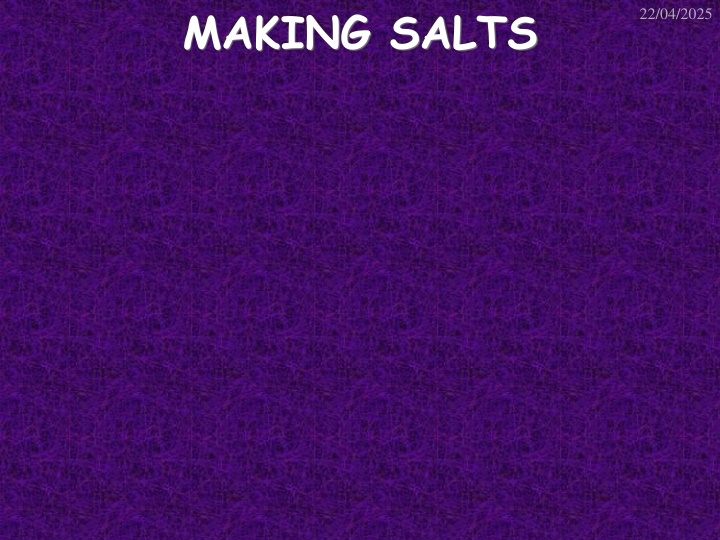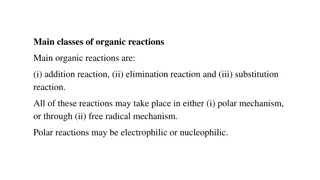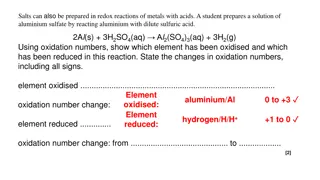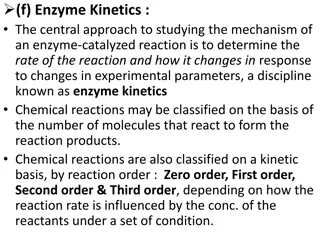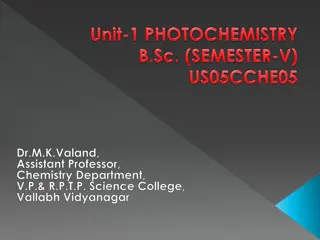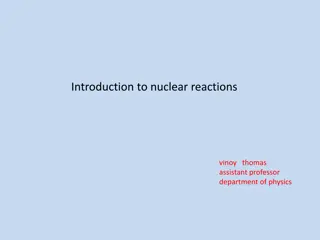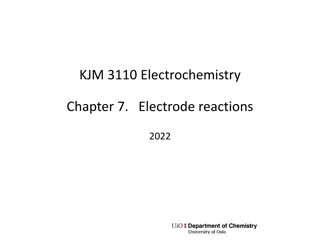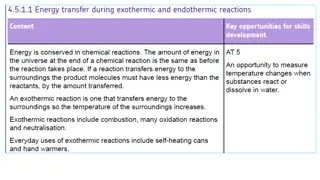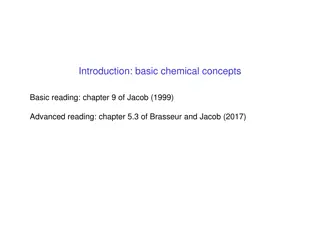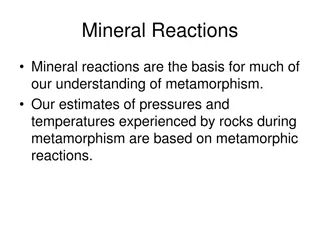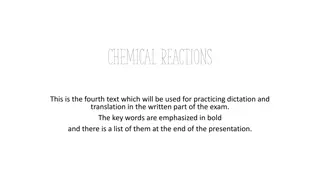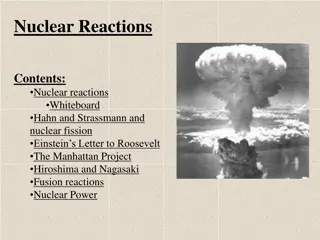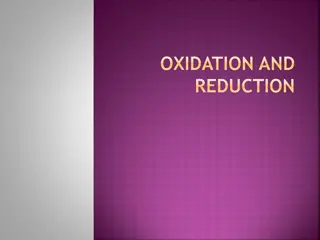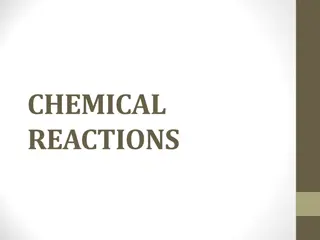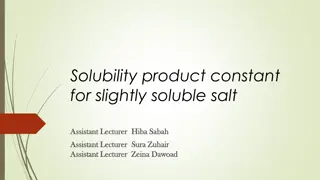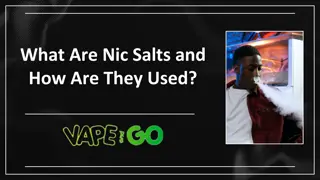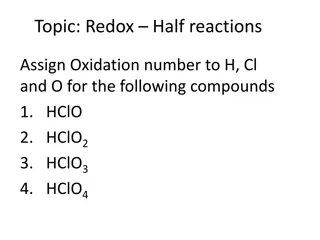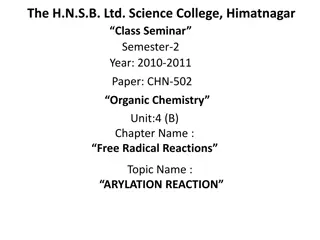Reactions and Properties of Salts
This content covers various reactions involving acids and metals to produce soluble salts, naming conventions for salts, and the properties of acids and alkalis. It also includes a quiz on acids and alkalis, and information on neutralisation reactions.
Download Presentation

Please find below an Image/Link to download the presentation.
The content on the website is provided AS IS for your information and personal use only. It may not be sold, licensed, or shared on other websites without obtaining consent from the author.If you encounter any issues during the download, it is possible that the publisher has removed the file from their server.
You are allowed to download the files provided on this website for personal or commercial use, subject to the condition that they are used lawfully. All files are the property of their respective owners.
The content on the website is provided AS IS for your information and personal use only. It may not be sold, licensed, or shared on other websites without obtaining consent from the author.
E N D
Presentation Transcript
MAKING SALTS 22/04/2025
Making Soluble Salts There are 3 types of reaction that can be used to make soluble salts. All 3 involve: An Acid A metal or metal compound Method 1 22/04/2025 METAL + ACID SALT + HYDROGEN e.g. magnesium + hydrochloric acid magnesium chloride + hydrogen Method 2 METAL OXIDE + ACID SALT + WATER Method 3 METAL HYDROXIDE (Alkali) +ACID SALT + WATER
Making salts To form the name of a salt, you just combine the name of the metal involved, with the salt type associated with the acid. Hydrochloric acid makes chlorides, Sulfuric makes sulfates, Nitric makes nitrates. Complete the table as practice Hydrochloric acid Sulphuric acid Nitric acid Sodium chloride + water Sodium hydroxide Potassium sulfate + water Potassium oxide Calcium nitrate + water Calcium
Reactions of metals with acids When a metal reacts with an acid it gives off hydrogen (which can be popped using a lit splint). The other product is a salt. METAL + ACID SALT + HYDROGEN e.g. magnesium + hydrochloric acid magnesium chloride + hydrogen Copy and complete the following reactions: 1) Calcium + hydrochloric acid 2) Zinc + hydrochloric acid 3) Iron + hydrochloric acid 4) Lithium + sulphuric acid
Quiz on acids and alkalis Acid, alkali or both??? 1) 2) This could kill cells 3) A metal hydroxide (e.g. sodium hydroxide) would be an _____ 4) When this reacts with a metal hydrogen is released 5) A metal carbonate (e.g. calcium carbonate) would be an _____ 6) This would feel soapy on your skin 7) This could be a corrosive 8) This will turn universal indicator purple 9) This would taste sour 10) This means a base that can be dissolved This a pH of less than 7
Neutralisation reactions When acids and alkalis react together they will NEUTRALISE each other. Neutralisation is an example of a displacement reaction: Sodium hydroxide Hydrochloric acid Na H OH Cl The sodium DISPLACES the hydrogen from HCl Na Cl H2O Sodium chloride Water
+ - H ions and OH ions H ions make acids acidic. OH ions make alkalis alkaline. The pH scale measures the alkalinity or acidity of a solution. 22/04/2025 + - + During neutralisation reactions the H ions react with the OH ions to form H2O (water). H (aq) + OH (aq) H2O(l) - + -
Neutralisation experiment Sodium hydroxide + hydrochloric acid sodium chloride + water A ____ was formed during the reaction, and we could have separated this by __________ the solution, allowing the salt to Crystallise. The salt that we formed depended on the acid: Hydrochloric acid will make a CHLORIDE Nitric acid will make a _________ Sulphuric acid will make a _________ Words to use nitrate, neutralised, alkali, sulphate, salt, evaporating
Reactions of metal oxides with acid A metal oxide is a compound containing a metal and oxide. They are sometimes called BASES. A BASE is simply an insoluble alkali it neutralises acids, but does not dissolve in water. For example: 22/04/2025 O Al O O Na O Mg Na Al O Magnesium oxide Sodium oxide Aluminium oxide METAL OXIDE + ACID SALT + WATER H Cl O H Cl Mg Mg O Cl H H Cl Copy and complete the following reactions: 1) Magnesium oxide + hydrochloric acid 2) Calcium oxide + hydrochloric acid 3) Sodium oxide + sulphuric acid
Using Bases to Make Salts Because Bases are insoluble the procedure for making a salt is very slightlydifferent Instead of simply evaporating off the water, you have to first remove any remaining (or excess) Base by filtration. 1) Drop the base into the acid 2) Filter it to remove any leftover base 3) Evaporate it to get the salt
Ammonium Salts Ammonia (NH3) is a gas that dissolves in water to make an alkali (Ammonium hydroxide). This can then be used to make Ammonium salts by reacting it with an acid. Ammonia + Nitric acid Ammonium Nitrate NH3(g) + HNO3(aq) NH4NO3(aq) Notice how NO water is made in this neutralisation reaction. Ammonium salts make good fertilisers because plants need nitrogen to make proteins (to grow). Ammonium Nitrate is the best for this purpose can you see why??
Making Insoluble Salts Doesn t usually require an acid. 22/04/2025 Insoluble salts can be made by mixing appropriate solutions of ions (soluble salts), so that a precipitate is formed. BaCl2(aq) + Na2SO4(aq) BaSO4(s) + 2NaCl(aq) Barium chloride + Sodium sulfate Barium sulfate + Sodium chloride Precipitation can be used to remove unwanted ions from solutions, for example in treating water for drinking or in treating effluent. The filter is covered in ions, which form precipitates with ions in the water.
An example question on reactivity Which metal is most reactive? Metal Reaction with dilute acid Some reaction Reaction with water Slow reaction Reaction with oxygen Burns brightly A No reaction No reaction Reacts slowly B No reaction No reaction No reaction C Violent reaction Slow reaction Burns brightly D Reasonable reaction Reacts with steam only Reacts slowly E
